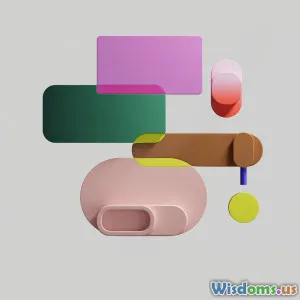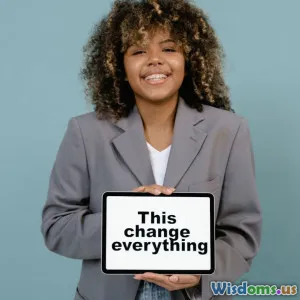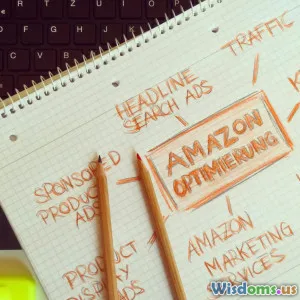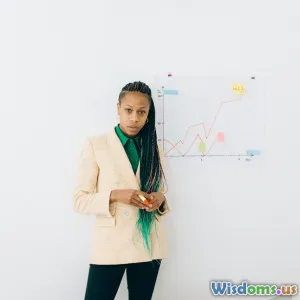
AI Trends Shaping Graphic Design Today
7 min read Explore how cutting-edge AI trends are transforming graphic design, boosting creativity, and shaping the industry’s future. (0 Reviews)
AI Trends Shaping Graphic Design Today
In the fast-evolving landscape of graphic design, Artificial Intelligence (AI) emerges not simply as a tool but as a powerful catalyst redefining creativity and productivity for designers worldwide. With AI’s increasing sophistication, what was once seen as human-exclusive artistry is now a collaborative avenue between man and machine.
Dive into this article to explore the most impactful AI trends reshaping graphic design today and how they are unlocking new creative possibilities.
Introduction
Imagine having a tireless assistant who can instantly generate designs, suggest palettes, and automate tedious tasks, all while inspiring fresh ideas. This is the promise of AI in graphic design. As AI technologies advance by leaps and bounds, they move beyond basic automation to actively participate in aesthetic decision-making, trend forecasting, and personalized content generation.
This integration is transforming industries—brands release marketing materials faster, designers experiment freer, and creative workflows redefine speed and quality. But how exactly is AI shaping this creative realm?
1. AI-Powered Design Generation
One of the most prominent shifts in graphic design is the advent of AI-driven design generation. Tools such as Canva’s Magic Design and Adobe’s Sensei AI enable designers to create entire layouts, logos, and visuals through AI suggestions and auto-completions.
Example: Canva’s Magic Design
Canva's AI tailors templates based on uploaded content, adapting styles and layouts by learning user preferences. This accelerates brainstorming and gives non-designers an accessible entry point into professional-grade visuals.
Impact:
- Designs that once required hours can now be generated in minutes.
- Enables rapid prototyping, allowing designers to explore multiple variations swiftly.
As Adobe CEO Shantanu Narayen stated, "AI is not replacing creativity; it’s augmenting it by handling mundane tasks, so creatives can focus on true expression."
2. Enhanced Personalization Using AI
AI's capability to analyze vast datasets has revolutionized personalized design, especially in marketing and digital content.
Case Study: Netflix
Netflix utilizes AI to generate personalized thumbnails that resonate with individual viewers, increasing engagement rates by up to 30%. Similarly, graphic designers now use AI to craft targeted visuals aligned with audience demographics and behaviors.
Tools like DesignScape
These tools analyze user data and emerging trends to help designers create customized campaigns that feel organic and highly relevant.
Benefits:
- Maximizes user engagement through tailored visuals.
- Helps brands connect deeper with niche audiences.
3. AI-Assisted Color Theory and Palette Selection
Choosing an impactful color scheme is both an art and a science. AI-driven applications analyze emotional responses and cultural trends to recommend palettes that elevate design effectiveness.
Example: Coolors and Colormind
These AI tools generate harmonious palettes based on uploaded images or brand identities. Colormind, for instance, uses deep learning trained on popular art and design styles to generate aesthetically pleasing combinations.
Why it matters:
- Saves time spent on trial-and-error.
- Ensures colors align with branding and target audience perceptions.
4. Automating Repetitive Tasks and Time-Consuming Elements
AI excels at taking over repetitive, tedious aspects of graphic design—like resizing images for multiple formats, retouching photos, or converting sketches into vector art.
Tools like Let's Enhance and Remove.bg
They automate complex tasks such as image upscaling and background removal with stunning accuracy. Graphic designers can now dedicate more time to creative strategy instead of technical drudgery.
Result:
- Increased productivity.
- Reduced manual errors and turnaround times.
5. AI in Trend Analysis and Forecasting
Predicting design trends is notoriously challenging. AI, with its pattern recognition prowess, analyzes massive datasets including social media, fashion, and pop culture to forecast emerging aesthetics and themes.
Insight:
Agencies leverage AI platforms to stay ahead, adapt quickly, and deliver designs that feel fresh and relevant to today's market.
Example:
Design firms integrating AI trend tools report a 20% increase in client satisfaction due to proactive design direction adjustments.
6. Ethical and Creative Challenges
While AI offers tremendous advantages, it raises questions about originality, authorship, and job displacement within graphic design.
Creative Concerns:
Does AI-generated design diminish human creativity? Many industry leaders argue AI acts as a collaborator rather than a replacement.
Ethical Considerations:
Issues surrounding data bias and intellectual property rights prompt ongoing debates on responsible AI use.
The key is transparency, clear attribution, and designers embracing AI as a medium to augment human ingenuity.
Conclusion
The fusion of AI with graphic design is not a distant future—it's today's reality, accelerating creativity, boosting efficiency, and expanding the horizon of what’s possible. From AI-generated design concepts to automated optimization of mundane tasks, the creative process is both enriched and expedited.
For designers and clients alike, the imperative is to adapt, experiment, and harness these AI tools responsibly—with a clear focus on preserving the unique human spark at the heart of creativity. Embracing AI as a collaborator promises not only to enhance the quality and speed of designs, but also to unlock entirely new artistic visions in the years ahead.
As AI continues to evolve, staying informed and agile will ensure graphic designers remain at the forefront of innovation, crafting visuals that captivate in an increasingly digital world.
References
- Adobe Blog, "How AI is Enhancing Creativity" (2023)
- Netflix Tech Blog, "Personalized Artwork to Boost Viewer Engagement" (2022)
- Coolors Design Insights, "Automated Color Palette Generation" (2023)
Rate the Post
User Reviews
Popular Posts





















